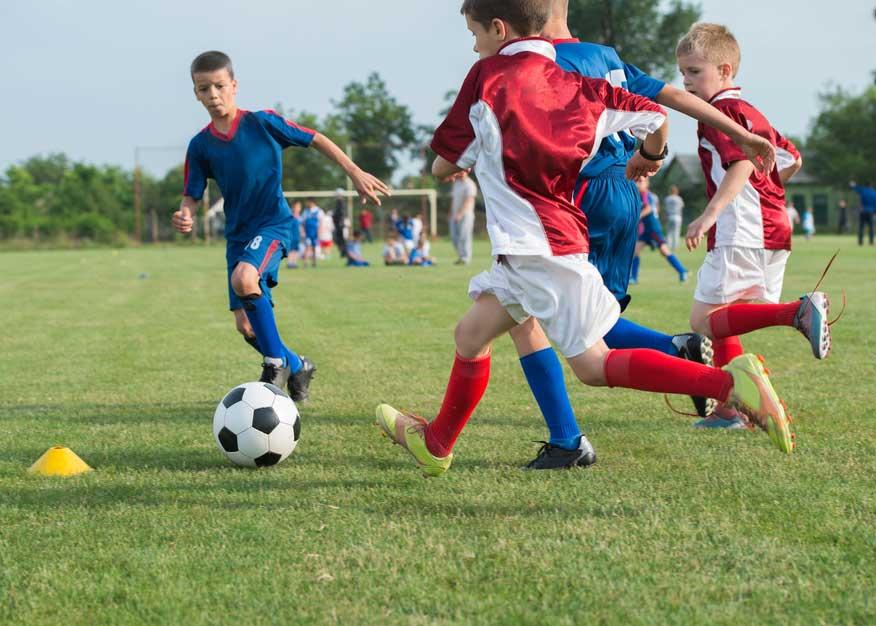In recent decades, the landscape of American childhood has undergone a seismic shift, with competitive sports increasingly dominating the lives of young children. From the soccer fields to basketball courts, millions of kids are trading playtime for rigorous training schedules and high-stakes competitions. But when did this transformation occur, and what are its implications for the next generation? in this article, we explore the rise of competitive sports in American childhood, tracing its roots through cultural trends, parental influences, and the commercialization of youth athletics. As communities grapple with the balance between fostering talent and preserving the spirit of play, we examine how this new norm is reshaping not only childhood experiences but also the broader values of American society.
The rise of Organized Sports in American Childhood and Its Impact on Play
The transformation of childhood play in America over the last few decades has been striking, with organized sports emerging as a dominant force.Once characterized by unstructured outdoor activities and imaginative games, children’s leisure time is increasingly dictated by the rhythms of competitive sports. This shift can be traced back to the late 20th century when youth sports programs gained momentum, driven largely by interest from parents eager to secure early athletic training for their children. Today,participation in organized sports not only encourages physical fitness but also emphasizes schedule management,teamwork,and discipline,often overshadowing traditional play experiences that foster creativity and social skills.
while the structured nature of youth sports brings certain benefits,it raises concerns about the implications for overall childhood growth. Parents frequently enough prioritize sports over free play, leading to a narrowing of children’s experiences. This emphasis on outcomes and performance can create pressure, pushing young athletes to specialize in specific sports at increasingly earlier ages. The following table illustrates some key differences between organized sports and free play:
| Factor | Organized Sports | Free Play |
|---|---|---|
| Structure | Highly structured with rules | Loose and flexible |
| Social Skills | Teamwork and cooperation | Creative problem-solving & negotiation |
| Focus | Winning and competition | Exploration and self-expression |
| Time Commitment | Seasonal or year-round practices | On-demand; spontaneous |
Examining the Shift from Unstructured Play to Competitive Environments
the transition from unstructured play to highly organized competitive environments in American childhood has been profound. Once a time when children freely engaged in spontaneous games with neighborhood friends, playtime has increasingly succumbed to the pressures of competitiveness and performance. Parents and coaches often push children to specialize in sports from an early age, emphasizing skill development and winning over the intrinsic joys of play. This shift is evident in the proliferation of structured leagues and elite teams, often requiring costly fees and intensive training schedules that can overshadow the simple thrill of friendly competition.
Moreover, this transformation reflects broader societal trends where achievement and success are emphasized. Factors contributing to this shift include:
- Increased commercialization of youth sports
- Pressure to secure college scholarships
- The belief that early specialization leads to greater chances of success
- Parental aspirations and societal expectations surrounding youth athletics
In certain specific cases, this competitive focus can lead to burnout or disinterest in sports altogether. Individuals are more likely to leave young athlete programs when the fun is removed from play. An examination of recent survey data underscores this sentiment:
| Year | Percentage of children Playing Organized Sports | Reported Enjoyment Levels |
|---|---|---|
| 2000 | 45% | High |
| 2010 | 65% | Moderate |
| 2020 | 70% | low |
This data indicates an alarming trend: as participation in organized sports rises, enjoyment levels have markedly declined. Balancing competition with the freedom of unstructured play may be crucial for fostering a healthy relationship with sports in America’s youth.
Strategies for Balancing Competitive Sports and Healthy Childhood development
As parents navigate the increasingly competitive landscape of youth sports, it’s essential to adopt a holistic approach that promotes not only athletic prowess but also emotional and social growth. Key strategies can include providing a balanced schedule that incorporates unstructured play, which is vital for creativity and problem-solving skills. Encouraging children to engage in various types of physical activities can definitely help mitigate the pressure of specialization in a single sport too early. Additionally, fostering an environment where failure is viewed as a learning opportunity rather than a setback can encourage resilience and perseverance.
Another effective strategy is prioritizing open communication between coaches, parents, and children. Transparent discussions about goals, expectations, and feelings surrounding sports participation can definitely help maintain a healthy balance.Moreover, implementing community-based programs or partnerships that promote inclusivity and teamwork can offer children a broader perspective on competition, emphasizing collaboration over rivalry.these initiatives not only support athletic skill development but also cultivate essential life skills, ensuring that competitive sports contribute positively to childhood development.
in Summary
the evolution of childhood in America has been considerably shaped by the rise of competitive sports,transforming play into a high-stakes pursuit for excellence. As parents,educators,and policymakers grapple with the implications of this shift,the balance between fostering athletic skill and ensuring healthy developmental activities remains crucial.The pressure to excel can frequently enough overshadow the simple joy of play, calling into question what it truly means to have a happy, healthy childhood. As we move forward, it is essential to reassess our values around youth sports, prioritizing not only competition and performance but also the fundamental joys of teamwork, friendship, and personal growth. The conversation sparked by this trend is just beginning, and its implications will resonate across generations.





